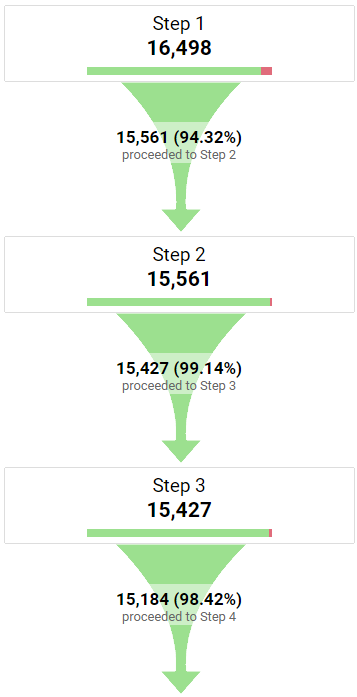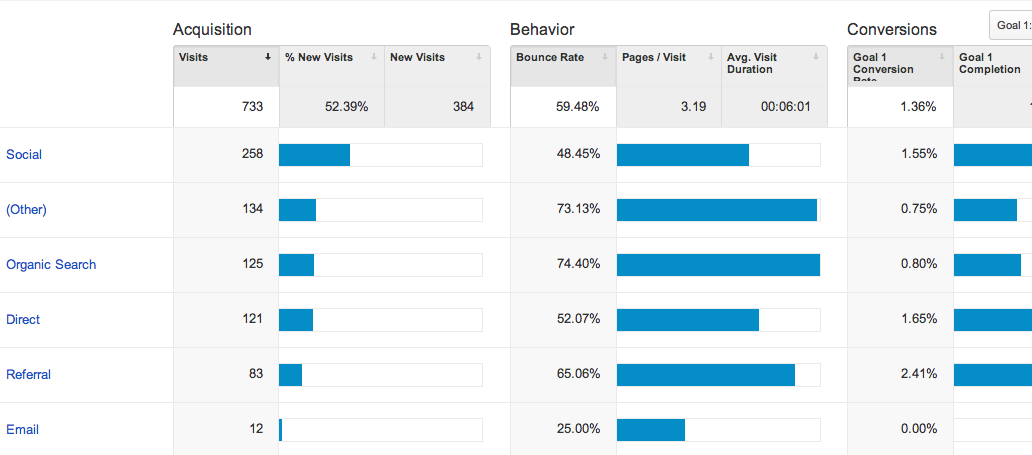What Data Is Google Analytics Goals Unable to Track: A Complete Overview
What Data Is Google Analytics Goals Unable to Track: A Complete Overview
Blog Article
Discover the Limitations of Google Analytics Goals: Unveiling the Data Types That Remain Untrackable
As businesses increasingly rely on data-driven decision-making, recognizing the restrictions of devices like Google Analytics ends up being paramount. While Google Analytics Goals deal valuable understandings right into user communications, there exist data kinds that avoid monitoring, positioning obstacles to a thorough understanding of customer actions. These untrackable information types raise inquiries regarding the precision and completeness of the analytics data that companies heavily depend upon for their electronic approaches. Curious to discover the surprise dead spots in your data evaluation procedure?
Insufficient Customer Trip Tracking
Insufficient user journey tracking within Google Analytics can impede the capability to accurately examine customer habits. When the individual trip is not completely tracked, there are spaces in the data that protect against a comprehensive understanding of how customers communicate with a site. This lack of insight can bring about missed possibilities for optimization and improvements to the user experience.
One typical problem with incomplete user journey tracking is the lack of ability to see the complete path that individuals take previously completing a goal or leaving the website. Without this information, it is testing to determine where users might be experiencing obstacles or rubbing factors that avoid them from converting. Additionally, insufficient monitoring can obscure the influence of specific advertising efforts or website modifications on individual behavior.
To resolve this limitation, it is critical to set up proper tracking systems within Google Analytics to catch the entire customer journey. This might include setting up event monitoring, objective funnels, or using tools like Google Tag Manager to ensure that no crucial communications go unrecorded. By obtaining a comprehensive view of the customer journey, website proprietors can make more enlightened decisions to enhance user interaction and drive conversions.
Attribution Difficulties
Navigating via acknowledgment challenges in Google Analytics needs an extensive understanding of just how various touchpoints contribute to the overall conversion process. Attribution difficulties develop from the intricacy of modern client trips, where customers interact with multiple networks prior to converting.
One common acknowledgment challenge is the difficulty in associating conversions to the proper source, specifically in instances where users communicate with several networks before converting. This can result in mistakes in identifying which advertising initiatives are driving the most conversions. Furthermore, cross-device tracking poses an additional attribution obstacle, as customers frequently switch over in between gadgets during their journey, making it challenging to track their interactions perfectly. Marketers must very carefully examine and translate acknowledgment information to make educated choices and maximize their advertising techniques properly.
Offline Conversions
Provided the obstacles related to associating conversions properly in online channels, the dimension of offline conversions presents a significant possibility for marketers looking for a more detailed understanding of their customers' trip. Offline conversions refer to activities that consumers absorb the physical world, such as making acquisitions in brick-and-mortar shops or over the phone, participating in occasions, or involving with printed products - what data is google analytics goals unable to track. These conversions are crucial for businesses that run both online and offline, as they provide useful insights into the effectiveness of advertising and marketing projects across different touchpoints
Tracking offline conversions commonly positioned a substantial challenge for marketers, as it was testing to connect these actions back to details on the internet communications properly. However, with innovations in innovation, such as the assimilation of CRM systems, one-of-a-kind identifiers, and discount coupon codes, services can now link the gap in between online and offline information to obtain a more holistic view of client habits. By successfully determining offline conversions, marketing experts can optimize their strategies, assign resources more successfully, and eventually enhance the general customer experience.
Cross-Device Monitoring
Cross-device monitoring plays an essential role in recognizing the interconnected nature check here of consumers' digital interactions throughout several devices. In today's omnichannel world, where individuals seamlessly switch between smartphones, tablet computers, and desktops, tracking their actions throughout these devices is essential for marketing professionals to acquire an extensive sight of their client trip.

Furthermore, privacy worries and regulations such as GDPR and CCPA have better complicated cross-device tracking. With users demanding even more control over their information and raised restrictions on tracking modern technologies, marketing professionals have to find cutting-edge and privacy-compliant ways to attach user communications throughout gadgets.
Dynamic Material Involvement
Understanding individual interaction with dynamic web content is crucial in optimizing electronic marketing techniques for improved audience interaction. Dynamic web content describes site components that alter based on user actions, preferences, or other factors, providing an individualized experience. Tracking user communications with dynamic web content poses obstacles for standard analytics tools like Google Analytics.
While Google Analytics can track standard interactions like clicks and page sights, it may struggle to record even more nuanced involvements within dynamic material. what data is google analytics goals unable to track. Metrics such as time invested in details dynamic components, float actions, or interactions within pop-ups are typically not conveniently quantifiable using typical tracking approaches. This restriction hinders online marketers' capacity to completely understand go to this website just how users are involving with dynamic content and customize their approaches accordingly

Verdict
In conclusion, Google Analytics goals have restrictions in tracking insufficient user journeys, associating conversions properly, recording offline conversions, tracking cross-device communications, and gauging vibrant content interaction. These restraints highlight the significance of checking out added tracking methods and tools to gain a much more thorough understanding of customer actions and conversions past what Google Analytics can give.
While Google Analytics Goals offer important insights into customer interactions, there exist information kinds that elude monitoring, presenting difficulties to an extensive understanding of customer behavior.Insufficient individual trip tracking within Google Analytics can prevent the capacity to precisely assess customer i loved this habits. When the user journey is not completely tracked, there are gaps in the information that stop an extensive understanding of how users interact with an internet site.One common concern with insufficient user trip monitoring is the lack of ability to see the complete path that users take before finishing an objective or leaving the site. By getting a thorough sight of the user trip, web site proprietors can make more enlightened decisions to improve individual engagement and drive conversions.
Report this page